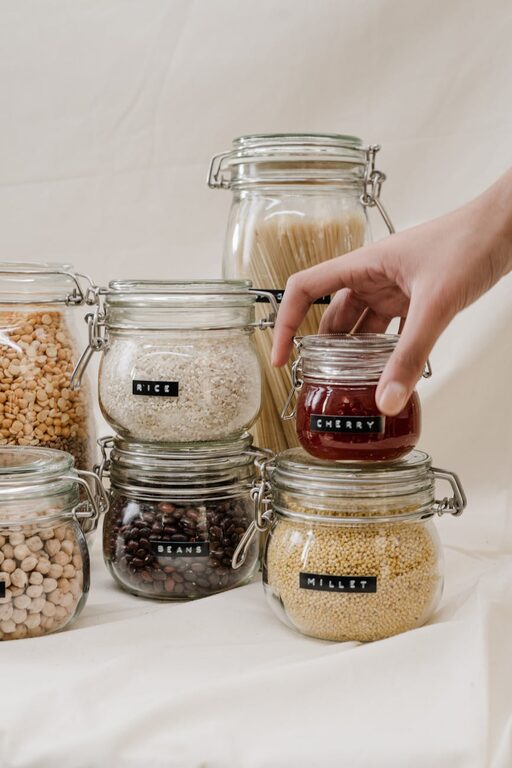Planning meals from pantry staples is a practical way to save time, reduce food waste, and make everyday cooking less stressful. Whether you’re trying to cook on a budget, avoid extra trips to the store, or simply want to get more creative with what you already have, using pantry staples effectively can transform your meal planning.
In this post, we’ll explore what pantry staples are, how to organize them, and how to build meal plans around them. You’ll also find tips and recipe ideas to get started right away.
What Are Pantry Staples?
Pantry staples are basic, non-perishable food items that can be stored at room temperature for extended periods. These ingredients typically form the foundation of many recipes and can be combined with fresh items later.
Common pantry staples include:
– Grains and pasta (rice, quinoa, spaghetti, couscous)
– Canned goods (beans, tomatoes, tuna, vegetables)
– Baking essentials (flour, sugar, baking powder)
– Oils and vinegars (olive oil, vegetable oil, apple cider vinegar)
– Spices and herbs (salt, pepper, garlic powder, dried oregano)
– Broths and sauces (chicken broth, soy sauce, hot sauce)
– Nuts and seeds
– Dried legumes (lentils, chickpeas)
Depending on your preferences and diet restrictions, your pantry staples list might vary. The goal is to stock versatile ingredients that can be the base for several meals.
Step 1: Take Inventory of Your Pantry
Before meal planning, assess what you currently have. This helps avoid buying duplicates and inspires ideas based on what’s already available.
– Pull everything out and sort items into categories.
– Check expiration dates and toss any expired items.
– Make a note of items you use often that need replenishing.
– Consider keeping a running pantry inventory list digitally or on paper to update as you go.
Step 2: Organize Your Pantry for Easy Access
An organized pantry makes meal planning smoother because you can clearly see what’s on hand.
– Group similar items together, such as all canned goods on one shelf.
– Use clear containers or jars for loose items like flour, rice, and pasta.
– Place frequently used ingredients at eye level.
– Label shelves or containers to speed up cooking prep.
Step 3: Plan Meals Around Your Staples
Once you know what you have, start building meals by combining pantry staples with fresh or frozen ingredients. Here’s how:
Choose a Base
Most meals start with a starch or grain, such as rice, pasta, or quinoa.
Add Protein
Use canned beans, lentils, canned tuna, or frozen meats you may have.
Incorporate Vegetables
Canned tomatoes, frozen vegetables, or fresh produce can add flavor and nutrition.
Flavor with Spices and Sauces
Use your spices, herbs, and pantry sauces to add variety.
Step 4: Use a Meal Template
To simplify planning, decide on a meal template for the week, such as:
– Grain + Protein + Vegetable + Sauce
– Soup or stew with legumes + veggies + broth
– Pasta with sauce + canned or fresh vegetables
– Stir-fry from canned beans or meat + rice + veggies + sauce
Create multiple meals by swapping ingredients while sticking to the template.
Easy Meal Ideas Using Pantry Staples
1. Chickpea Curry
– Canned chickpeas
– Canned diced tomatoes
– Onion and garlic (fresh or powdered)
– Curry powder or garam masala
– Rice or quinoa
Simmer chickpeas with spices and tomatoes, serve over rice.
2. Pasta with Tuna and Tomato Sauce
– Pasta
– Canned tuna
– Canned tomato sauce or diced tomatoes
– Olive oil, garlic, dried oregano
Cook pasta, heat tomato sauce with garlic and oregano, stir in tuna.
3. Lentil Soup
– Dried or canned lentils
– Carrots and onions (fresh or frozen)
– Vegetable or chicken broth
– Bay leaf and thyme
Simmer lentils with broth and vegetables for a hearty soup.
4. Rice and Beans Bowl
– Rice
– Canned black beans or kidney beans
– Spices like cumin and chili powder
– Corn (frozen or canned)
– Salsa or hot sauce
Serve beans and corn seasoned over rice with your favorite salsa.
Tips to Maximize Your Pantry for Meal Planning
– Rotate stock: Use older items first, then restock to keep your pantry fresh.
– Batch cook: Prepare large portions of rice, grains, or soup that you can refrigerate or freeze.
– Combine fresh and frozen: Use fresh produce sparingly and supplement with frozen vegetables.
– Expand flavors: Have a few key condiments like soy sauce, mustard, or vinegar to change up flavors.
– Keep a recipe list: Maintain a folder or digital document with staple-based recipes you enjoy.
When to Replenish Your Pantry Staples
Keep an eye on ingredients you use frequently. After planning your meals, check what needs restocking. Buying staples in bulk from stores or online can save money over time.
Conclusion
Meal planning from pantry staples is about making the most of what you already have. With a well-organized pantry, a good inventory, and a simple meal template, you can whip up tasty, nutritious meals any day without stress or extra grocery runs.
Start small, experiment with combinations, and enjoy the convenience and satisfaction of cooking from your pantry. Happy cooking!

